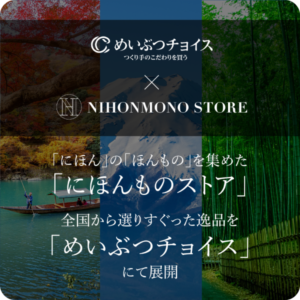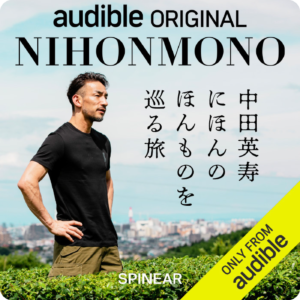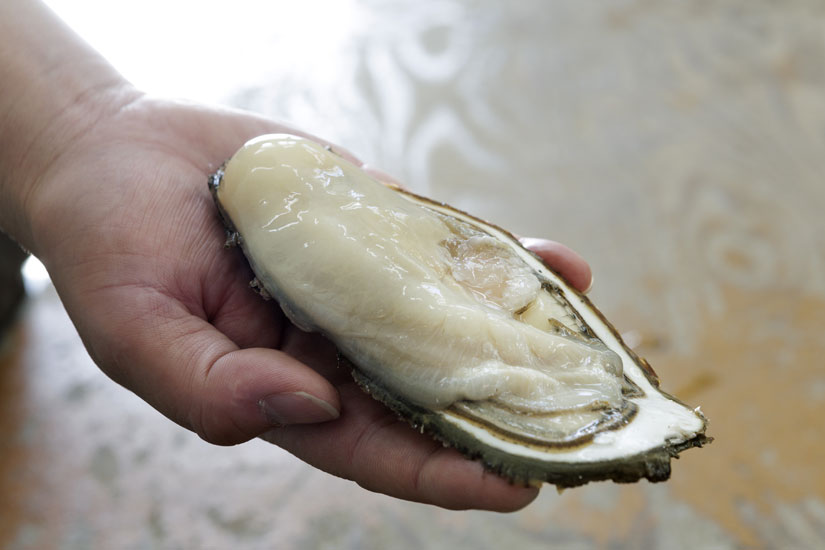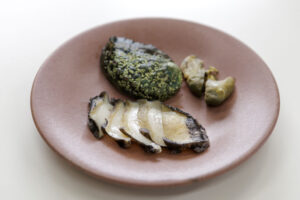Hiroshima and Miyagi prefectures are well-known for producing oysters, but at the Toyosu Market in Tokyo, Maruten Suisan of Rikuzentakata City, Iwate Prefecture, has won Japan’s top first-round competition in consecutive years since 2017 for its oysters in the shell. The company’s oysters are “three-year-old” oysters, which take three years to grow, and are highly valued for their size and flavor.
Grown in Hirota Bay, which is rich in nutrients and has excellent water quality
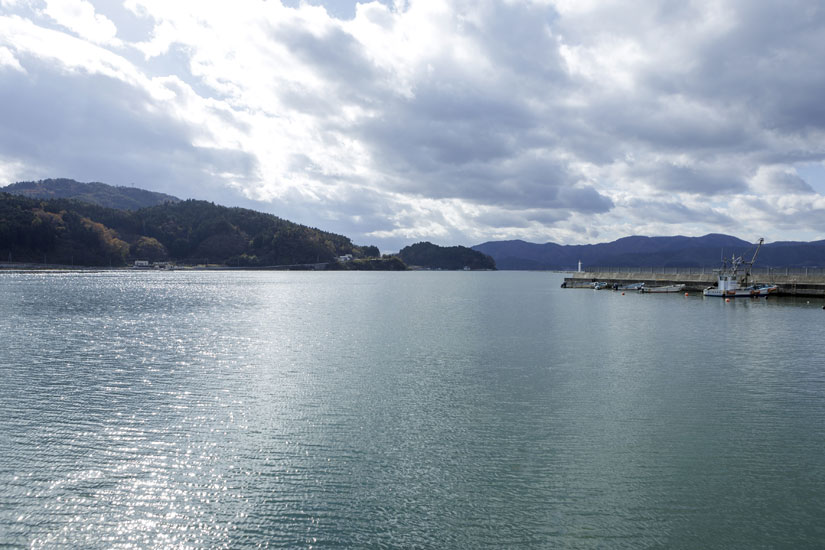
The Sanriku coast is considered one of the three best fishing grounds in the world, where warm and cold currents collide and attract many fish. Hirota Bay in Rikuzentakata City, where Marten Suisan is located, is part of this area, and the phytoplankton contained in the fallen leaves of the surrounding mountains flows into the sea through the underground water and the Kesen River, making it a rich fishing ground. Furthermore, there are no industrial areas in the surrounding area, and unlike urban areas, the amount of wastewater from daily life is low, making the water quality excellent. In addition, the bay’s calm waves have long been a source of seaweed, scallops, oysters, and other fish.
Local Kesen cedar is used for cultivation rafts.
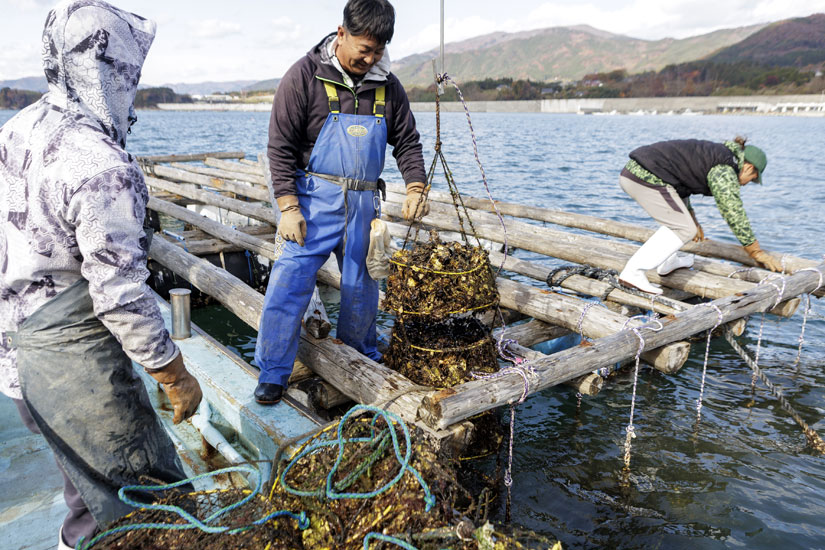
There are two main types of oysters widely distributed in Japan: oysters and rock oysters. The former is in season in winter, and most of them are cultivated. The latter, on the other hand, is in season during the summer, and is available both cultured and wild, with the Sea of Japan being the main production area.
There are several methods of cultivating oysters, but Marten Suisan cultivates oysters using the “raft method,” in which oyster larvae, or baby oysters, are tied to a rope and suspended from a floating raft on the sea. Oyster seeds are purchased from Miyagi Prefecture. The oyster seeds are purchased from Miyagi Prefecture, because the oyster farmers need a shallow water environment in order to collect the seeds in the sea, which is difficult to do in Miyagi Prefecture, and Miyagi Prefecture meets the requirements. The rafts are also made of local Kesen cedar. The first cedar used for the rafts was one that grew in the surrounding mountains, and it has been used to this day because of its sturdiness.
The secret of the oysters’ high reputation is their “3-year-old” size, body, and flavor.

Generally, most oyster producers grow oysters for one or two years before shipping them out, but Marten Fisheries ships “3-year-old” oysters that have been grown for three years. Originally, like other oyster producers, “one- to two-year-old” oysters were shipped to the market, but at the end of the Showa period, Mr. Sasaki’s father and other producers of the same generation decided to grow oysters for three years in order to differentiate and brand them. Currently, there are 10 oyster producers in Hirota Bay, and four of them, including Mr. Sasaki, have taken over the business. The three-year-old oysters with shells that Mr. Sasaki ships come in three sizes (SML, L, and L), with the large size overflowing the palm of an adult man’s hand. Moreover, because the meat inside is large and tasty, they have won the top prize in Japan at the Toyosu Market’s first auction since 2017. They are also well-received by the restaurants to which they sell directly, and orders are increasing every year.
We want to handle “3-year products,” even if it is risky.
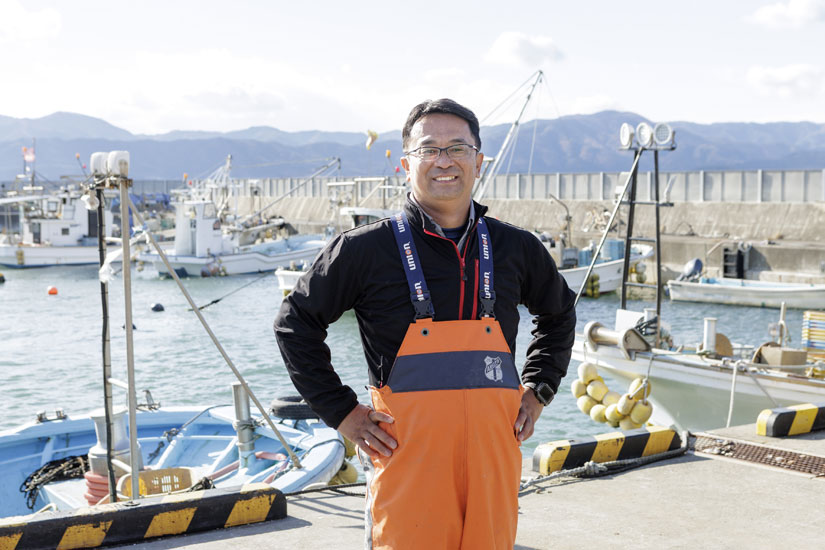
However, there are risks involved in producing three-year products. Since the fish are raised in the sea for a longer period of time, there is a higher probability that they will fall from the rafts or ropes during the time they are in the sea. Even with this risk, the market price is almost the same as for two-year-old fish. Even so, Mr. Sasaki insists on raising three-year-old fish because he does not want to waste the efforts of his parents’ generation, and also because he wants to meet the demands of restaurants that repeatedly order his fish.
Innovations to improve the meat content
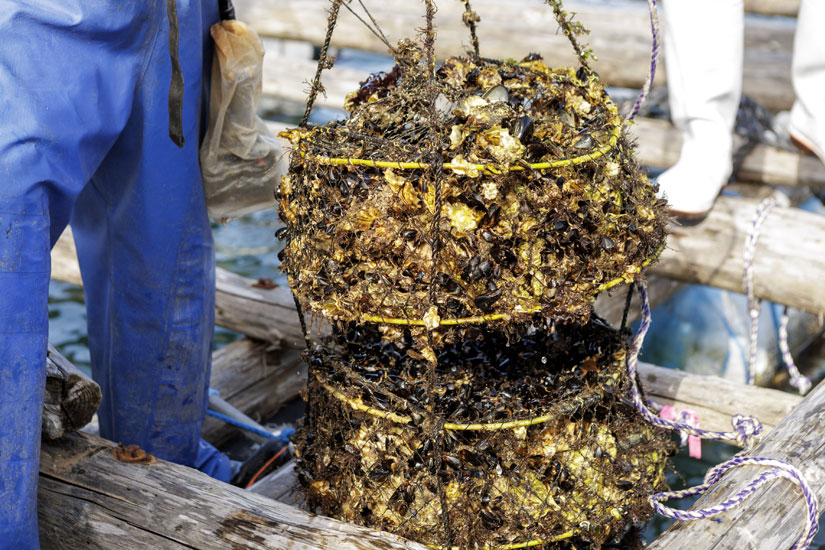
As mentioned above, Mr. Sasaki’s three-year-old oysters with shells are highly valued because not only the shells but also the meat is large and tasty. The secret lies in the process of removing the oysters one by one from the rope, putting them in a net, and submerging them in the sea just before shipment. The oysters are then submerged in the sea for a month while the temperature of the sea water drops daily, which makes the meat bigger, whiter, and firmer.
Unlike peeled oysters, where you can tell the size of the oyster at a glance, the meat of oysters in the shell is not always clear whether it has grown well inside the shell or not, and there is always a chance of being wrong. For example, when a restaurant opens the oyster shell and offers it to a customer, if the oyster is small, the customer will be embarrassed, but if it is large, the restaurant will trust the oyster, which will lead to the next order. That is why we do this work as a ‘finishing touch before shipping’ to ensure that there are as few ‘outliers’ as possible,” says Sasaki. In fact, in western Japan, such as Hiroshima Prefecture, the fish is shipped by the kilogram, so the size of the fish can be estimated by weight. Reducing the probability of such a situation as much as possible is the key to gaining the trust of customers.
There are other ways to grow the body size. These are “thinning” of the young clams and “hot water treatment,” in which the clams are submerged in 75°C water for 30 seconds on the boat in the summer. By thinning out the oysters, the remaining oysters are able to consume plenty of nutrients from the sea, and the hot water treatment also removes seaweed, barnacles, and other attached matter from the shells. This prevents wakame seaweed and barnacles on the shell from taking away the nutrients in the sea that the oyster needs for growth.
Incidentally, because oysters have thick shells and are highly sealed, they will survive even if they are submerged in hot water at the temperature and for the time mentioned above.
Steamed oysters are recommended in addition to raw oysters
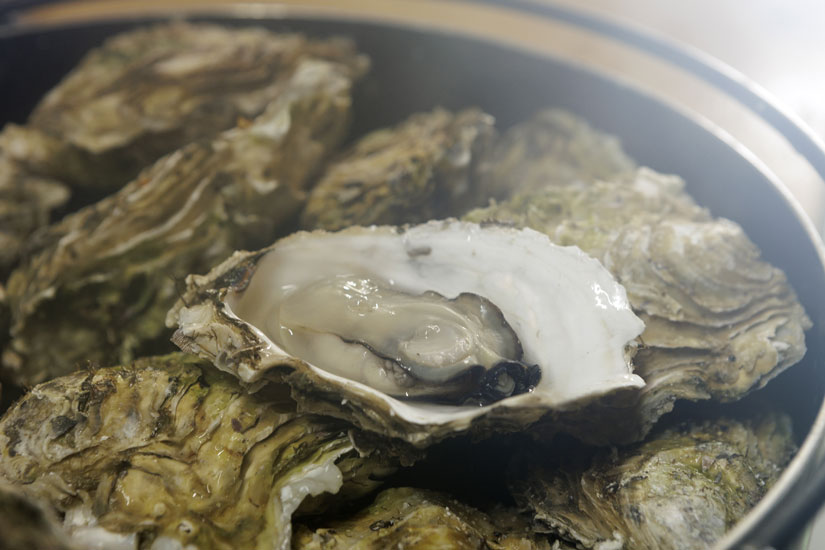
Mr. Sasaki’s oysters are also highly regarded for their flavor. In general, oysters from Sanriku have a higher salt content than those from western Japan or Hokkaido, and the more you bite into them, the sweeter they taste. Mr. Sasaki’s oysters are no exception to this rule, and their firm flesh gives them a crispy texture when eaten raw. On the other hand, Mr. Sasaki also recommends steaming the oysters for those who are not used to eating oysters, such as children. It is said to soften the flavor of the sea and increase the sweetness.
Direct sales to increase value-added and prices
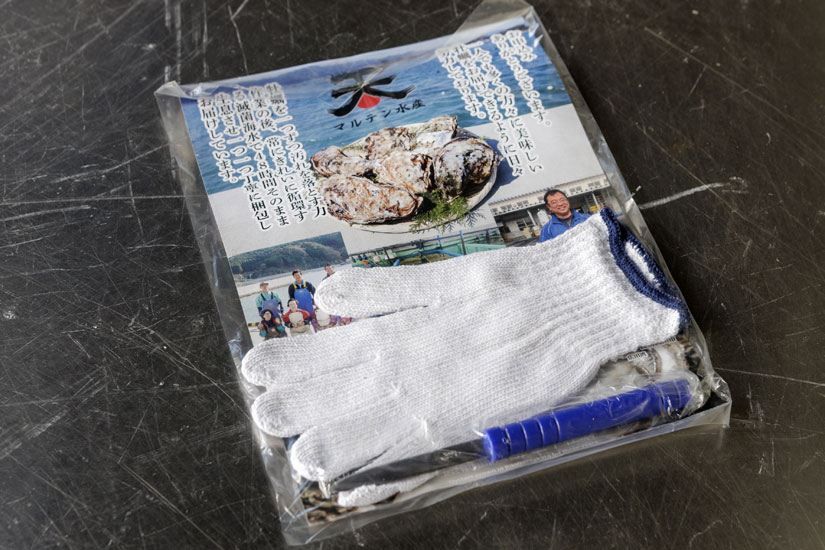
In addition to restaurants, Marten Suisan also focuses on direct sales to individuals. As mentioned earlier, the price of three-year-old oysters is almost the same as that of two-year-old oysters, so the company aims to add value and increase the price of three-year-old oysters by selling them directly. Oysters are alive until they are shucked, so the shucked oysters that arrive at the store or home are still alive and fresh. I want people to taste the oysters in their best condition,” says Sasaki. It is difficult for those who are not accustomed to handling oysters in the shell to open them, but for those who wish to use an oyster opener (a special knife), which is available for a fee for direct sales, they can experience the milky taste and crispy texture of oyster meat that was alive until just before the oyster was delivered.
Many oyster producers in Rikuzentakata, including the company, do not engage in sea urchin fishing in summer or abalone fishing in winter, but specialize in oysters. That is why they are thinking about “how to grow good quality oysters” all year round and putting their efforts into oyster production. In fact, peeled oysters from Rikuzentakata are sold at the highest unit price in Japan at the Toyosu Market, and one can imagine that the efforts of these producers are behind this. The brand power of Rikuzentakata’s oysters is sure to grow even stronger.
